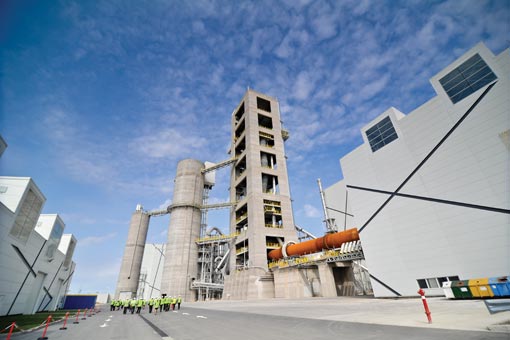Europe’s youngest cement plant
It is rare for a new 1Mta cement works to be constructed in Europe, and Hungary is perhaps not the first place one might expect such a plant to be built. However, Austria’s Strabag identified an opening in the local market and to realise its dream embarked on an ambitious project with participation from China, Europe and Lafarge Cement. Zsófia Zadravecz of Lafarge Cement Hungary gives a detailed description of the equipment and plant design for Europe's newest cement plant.

The Királyegyháza cement works is a stunningly-designed integrated plant with a five-stage
preheater tower and a 60m-long kiln with a clinker capacity of 2500tpd
In 2007, the project company of Strabag, Nostra Cement Ltd, started construction of a greenfield cement plant situated 20km from Pécs, Hungary. The new Királyegyháza cement works, with a clinker capacity of 2500tpd, involved an investment price tag of approximately €270m.
Construction was supervised by Nostra Cement and in May 2010, during the final phases of the construction, Lafarge brought its expertise to the project following a strategic tie-up between the French construction materials major and Strabag (see panel story). The project’s main equipment supplier was CMBI Construction Co of China.
Commenting on Strabag’s decision to pursue its investment in this new plant, Chairman Hans Peter Haselsteiner said: “The companies had decided the investment was worthwhile even at a time when other industry players were avoiding capital expenditures.”
Inaugurated in September 2011, the Királyegyháza facility has been built with a unique architecture and the latest technology, making it the most modern cement factory in Europe and enabling the manufacture of the highest-quality, environmentally friendly and innovative cements.
